Humanity

Humanity of the unborn child
Technological advancements have made it possible to view ultrasound images of unborn children kicking, jumping, and waving their arms and legs at just seven-to-eight weeks after conception! Such evidence has opened the eyes of many academics, doctors, and most importantly, expectant mothers on the verge choosing to abort their unborn children.
A fetus does not just become human once it has reached a certain developmental stage in the womb. At conception, a human life is created. It's amazing how many pro-abortionists have little trouble classifying animals, plants and fungi as living things, and yet, when it comes to babies at the earliest stages of life, respect for human life and dignity becomes conditional. These same people, while expressing concern for animals' pain, deny the pain experienced by unborn children. To show just a bit of compassion to the most vulnerable and innocent members of society would affirm the humanity of these unborn children.
Terminology and meaning
Alive
adj. (usu. predic.) 1.(of a person, animal, plant, etc.) living, not dead. Oxford Dictionary 1990
Alive means that this being is growing, developing, maturing, and replacing its own dying cells. It means not being dead.
Human
adj. & n. - adj. 1. of or belonging to the genus Homo.Oxford Dictionary 1990
Homo Sapiens - unique from all other beings in that they have 46 human chromosomes in every cell. Such beings do not belong to any other family.
Fetus
n. an unborn or unhatched offspring of a mammal esp. a human one more than 8 weeks after conception.Oxford Dictionary 1990
Latin for "young one," offspring and in the context of human persons, a young human person. But in recent times it has come to be understood in a very different, even an antithetical way, as something other than a person or a child. For some people it is a foetus instead of a child that a woman is carrying. It is psychologically easier to speak of the destruction of a foetus than of a child. Defenders of abortion object to the use of the term child - they generally do not want to appear as defending the killing of a child. So it is a foetus; destroying a foetus does not sound so bad. The reality of the child in the womb must be emphasised and conveyed to others. Suppose a woman suffers a miscarriage. A doctor will not tell her, "You have lost your foetus"; he will say, "You have lost your child." If the child is marked for destruction he may well be referred to as a foetus, for this term has a cold, scientific neutrality that effectively obscures the reality and preciousness of the small preborn child.
Viability
adj. b (of a fetus or newborn child) capable of maintaining life.Oxford Dictionary 1990
Some people say that life begins when the unborn child reaches "viability", the point where he or she can survive outside the womb. When does a developing child become "viable? That is, what is the earliest a child could be born and still have a chance to survive? Forty years ago doctors put the age of viability at about 30 weeks into pregnancy, or ten weeks premature. Twenty years ago it was 25 weeks. Today it is 20 weeks. But viability used to be 30 weeks and is now 20. What's changed? Have babies changed? Have mothers changed? No, what's changed is the medical know-how of the doctors and the sophistication of the life support equipment available to them. Forty years ago doctors didn't have all the high-tech medical equipment they have today, so babies who would have died back then can now be saved. So what is "viability" measuring? It is a measure of the state of medical science and technology in a particular place at a particular time; it does not tell us anything about the baby.
Quickening
v. 3 intr. a (of a woman) reach a stage in pregnancy when movements of the foetus can be felt. b (of a foetus) begin to show signs of life.Oxford Dictionary 1990
For several centuries the most popular belief was that life begins when the unborn child begins to move. This was called "quickening", which actually means "becoming alive". But back then they didn't have ways to see into the womb to really tell when a baby starts moving. By 18 weeks the baby can kick hard enough for the mother to feel it, but of course he's moving before then, though they weren't sure exactly when. Today we know that babies start moving at about six weeks.

Life begins at Conception
Fertilization
n. The fusion of male and female gametes during sexual reproduction to form a zygote.Oxford Dictionary 1990
At the Moment of fertilisation 23 chromosomes from each parent combine to create a unique individual human being when the nuclei from the sperm and the ovum combine.
The life of a baby begins long before he or she is born. A new individual human being begins growing in the mother's uterus at fertilisation and, if the baby's life is not interrupted, he or she will someday become an adult man or woman. Medical science has given us that answer to determine when life and therefore humanity begins. The magic moment is: conception. It is at that moment that the unique combination of chromosomes that define you first came into existence.
Before conception, that blueprint did not exist anywhere; after conception, it did. From that point on, your body grew and developed, but unless you get an organ transplant or some such artificial addition nothing new is added except food, fluids, and oxygen. Scientifically, biologically, and medically, life begins at conception.
Beyond dispute
As the world-renowned French geneticist Jerome LeJeune asserted, "To accept the fact that after fertilization has taken place a new human has come into being is no longer a matter of taste or opinion. The human nature of the human being from conception to old age is not a matter of metaphysical contention, it is plain experimental evidence."
The scientific evidence is beyond dispute:
The unborn baby is alive from the moment of fertilization. She has a heartbeat at three weeks and brain waves at six weeks.
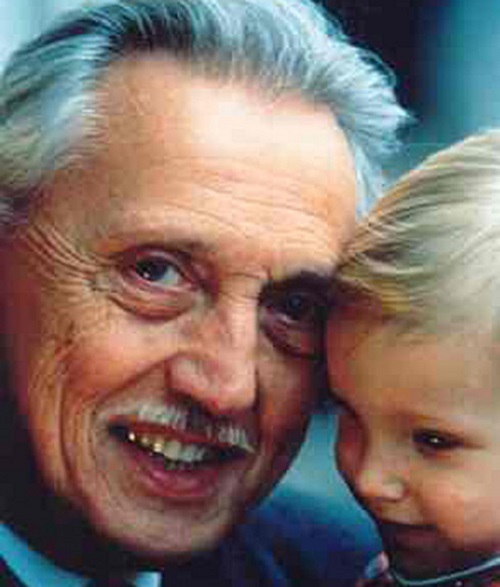 | She is complete. She is programmed from the inside for an ongoing process of growth and development. She has 46 chromosomes in the cells of her body - the scientifically verifiable human genetic code. The unborn baby from the moment of fertilization is a unique human being - never to be repeated in all of history. She has her own genetic code and is biologically different from her mother or father. She a unique individual. Nothing magic occurs at birth which suddenly makes an unborn baby human. The baby is the same baby, whether inside or outside the uterus. Every unborn baby is a complete, individual living human being from the earliest moment of his or her existence at fertilization. |
Process of Conception
The medical researcher Karl Ernst von Boar first theorized it in 1828. Over the next several decades doctors and researchers were able to observe the process of conception in the laboratory, first in animals, later in humans, and by the 1850's this was well-recognized scientific fact. Ultrasound, intrauterine photography, genetic engineering ... all have confirmed and reconfirmed what was discovered in the 1800's.
What's changed is that the medical establishment has changed its "knowledge" to conform to the prevailing political winds.
Today we usually declare someone to be clinically and legally dead when we can no longer detect brain waves using an electroencephalo-gram (EEG). So if we say that someone is dead when brainwaves stop, perhaps we should say that he is alive when brainwaves start. When do brainwaves start? We can measure them at 6 weeks.
But that is not to say that brainwaves are not present prior to that time. Merely to say that we are, as of now, incapable of measuring them.
Heartbeat
Before the idea of "brain death" came along, we used to declare someone dead when his heart stopped beating. So if you're dead when your heart stops beating, perhaps you're alive when you're heart starts beating. When does this happen? At just three weeks after conception.
Listen to the baby's heartbeat at 7 weeks here...
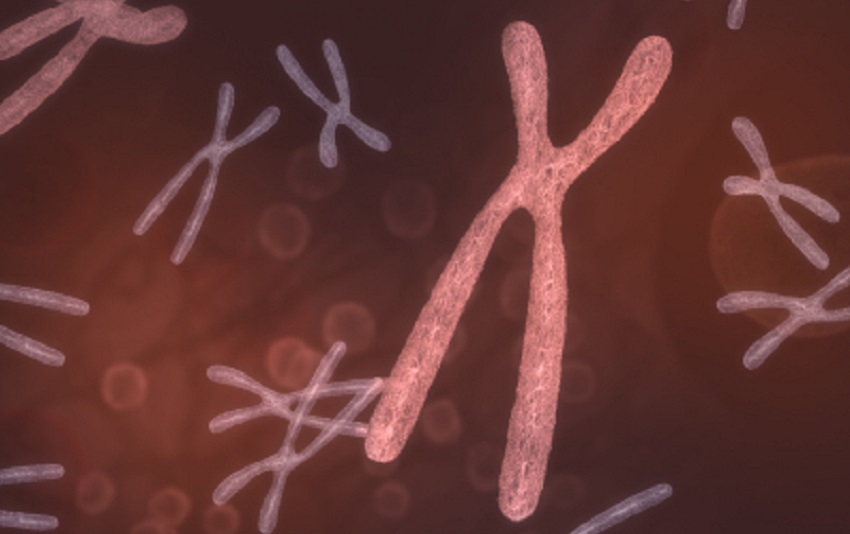
Special blueprint
These are human chromosomes. They are found in every cell of your body. Every one is a copy of the set found in that single cell that you began as. They make up the complete plan, the blueprint, for a person. Modern science is only beginning to understand the code that this plan is written in, but a skilled lab technician with the proper equipment could examine these chromosomes and tell a few simple things. Chromosomes come in pairs. There are supposed to be exactly 46 chromosomes. If you have too few or too many, than this person has some serious physical deformity.
Differences
Differences between born and unborn
There are, of course, differences between the child in the womb and a born person. What are these differences, and are any of them morally significant? There seem to be four major differences between a preborn and a born person:
1. Size
2. Level of Development
3. Environment
4. Degree of dependency
Size
The child in the womb at seven weeks is normally smaller than the newborn child. The latter is normally smaller than a one-year-old child, who is normally smaller than a five-year-old child. A 100-pound girl is smaller than a 250-pound football player. This is of no moral significance. The larger person isn't any more a person, or more precious, than the smaller. A small newborn baby is just as precious as an older child, or an adult. The child in the womb is simply a smaller child.
Level of Development
A baby is less developed than a teenager. Is he or she less a person? Being less developed, as well as being smaller, represents earlier phases on the human life continuum. But he is equally a person; he is the same person at his earlier stage of development as at the later stages, or else it would not be his development. The child at seven to eight weeks is less developed than later, but he is already very well developed.
As noted earlier, "After the eighth week no further primordia will form: everything is already present that will be found in the full term baby." For example, "a human face with eyelids half closed ... hands that will soon begin to grip, feet trying their first gentle kicks."
Degree of Dependency
We are all dependent on one another, physically and psychologically. Some are more dependent than others: children, the sick, the handicapped. A more dependent person - someone in an intensive care unit, for example - is not less of a person, than someone who is relatively more independent. To see clearly the moral irrelevance of degree of dependency for the reality, dignity, and preciousness of a person, consider the following:
Degree of dependency is relative. It is, precisely, a matter of degree, of more or less. Everyone is dependent on others to some extent, physically and psychologically. At certain times, each of us becomes, or can become, more dependent on others than usual: if we are lost, if we've had a serious accident, if we are blinded. Clearly these conditions do not affect our being as persons, our preciousness and dignity, our right to live.
Specifically, it is important to remember that when you are dependent on others, that is, more dependent than usual, you are the same person as you were before, and will be later. So, too, is the child in the womb. He is, at this stage of his life, the same person who will later be born and grow up to be less dependent.
Suppose that you are now healthy, thus relatively independent. Then you have a serious accident that leaves you paralysed, thus very dependent on others. The continuation of your life depends on others for protection and nourishment, parallel to the child in the womb. You are still the same person. You have the same dignity and right to live.
Physical dependency, as it applies to the world in the womb or to a person who is paralysed, concerns a person's bodily dimension, and not the person as a person, or his right to live. I remain myself through the various changes, phases of growth and development, phases of relative dependency or independence, that pertain to my body. I am not any less me because my body may be in a state of greater dependency than at another time.
Thus we see that dependency through connection to another person has nothing to do with being a person. It has only to do with how the body is sustained. To kill a normal child sleeping in his crib is a terrible evil. Killing a child in an incubator, dependent on that incubator, is no less evil. Abortion is killing a child in the incubator of his mother's womb. A more dependent child is a more fragile child. He deserves more care and protection, not less.
 | 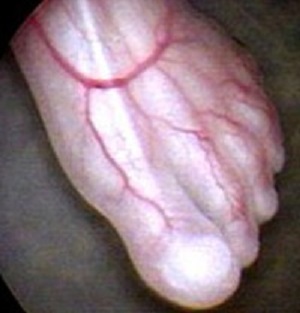 |
 | 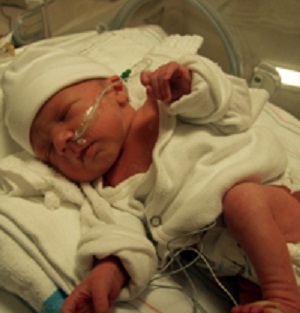 |
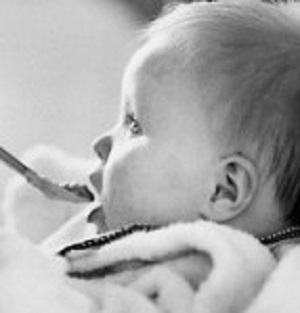 | 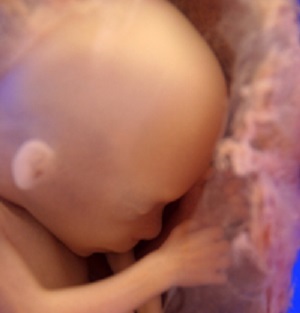 |
Dignity of the human child
When dignity is denied
The true alternative to might over right is reverence for the dignity of each person as a person; because he or she has the being of a person.
The important reality of the dignity of the human person can be seen, and taken seriously, in many ways, especially when that dignity is denied or under attack. Slavery, child abuse, sexual molestation, and rape are among some of the more strong examples. Or if a person with a physical handicap is severely beaten by someone who takes advantage of that handicap.
Another example is the injustice of taking advantage of a person's inability to function as a person, either because he is not now capable of doing so, or no longer capable, or not yet capable. This is perfectly parallel to the injustice of taking advantage of a person's physical inabilities. Persons are persons, they have the dignity of a person, whether they have these abilities or not. To take advantage of a person's inabilities is to affront his dignity. It is an antithesis to the reverence due to his dignity as a person.
Thus we see that dependency through connection to another person has nothing to do with being a person. It has only to do with how the body is sustained.
Dignity
It is wrong to kill a child in the womb, or a newborn baby, on the grounds that he has not yet reached a sufficient degree of functioning as a person. The same applies to a child with a mental handicap who may never achieve a certain "normal" level of functioning as a person. He has the same human nature, he is equally a person, he has the same dignity as a person fortunate enough to be normal.
As always, it is his being as a person that counts, not his capabilities for functioning as a person. It is the achievement view that constitutes the principal denial of this. In one case (the normal child), it denies his personhood, his dignity, because he has not yet achieved the required level of functioning as a person. In another case (the severely retarded child), it denies his personhood, his dignity, because he will never achieve the required level of functioning.
But who says he must? Nobody has the right to set such standards, and impose them on others, especially at the price of their lives.
The normal person deserves our reverence, our respect for his dignity, not because he is normal, not because of actual or potential achievements in functioning as a person, but simply because he is a person. And the non-normal person is equally a person, and deserves equal reverence.
If you were to become a victim of a disease or accident that left you handicapped or incapacitated, you would want your dignity respected just as before. You would still be yourself, the same person, hence a being with the dignity of a person. Exactly the same applies to the handicapped child, and to the preborn child, who is in many respects similar in his capabilities.
Respect for human life
Reverence is the most fundamental response due to another person in his dignity; it is not the whole of it. Love is the fulfillment and the highest form of this response. Each in its own way is an antithesis to using a person as a mere means, as in rape, enslavement, and other ways, and to the attitude of "get rid of it" so often displayed in the context of abortion.
Each is also an antithesis to the achievement view and its odious discrimination between those who have achieved, and therefore count, and those who have not achieved, and therefore don't count, and thus may be destroyed.
The reality of love as the deepest response to another in his dignity manifests itself in the attitude and work of Mother Theresa of Calcutta. The story is told of a man whom she found abandoned in the gutter of a street.
She picked him up, brought him to her home, cared for him in love for the few remaining days (or hours) of his life. He responded by saying, "I have lived like an animal in the street, but I will die like an angel, loved and cared for."
For two millennia in our Western culture, written into our constitutions, specifically protected by our laws, and deeply imprinted into the hearts of all people, there has existed the absolute value of honoring and protecting the right of each human to live.
This has been an unalienable and unequivocal right.
Never, in modern times except by a small group of physicians in Hitler's Germany or Stalin's Russia has a price tag of economic or social usefulness been placed on an individual human life as the price of its continued existence.
Never, in modern times except by physicians in Hitler's Germany has a certain physical perfection been required as a condition necessary for the continuation of that life. Never since the law of paterfamilias in ancient Rome has a major nation granted to a father or mother total dominion over the life or death of their child. Never, in modern times, has the state granted to one citizen the absolute legal right to have another killed in order to solve their own personal, social or economic problem.

The abortion holocaust
And yet, if this is human life, permissive abortion laws in other nations do all of the above. They represent a complete turn-about, a total rejection of one of the core values of Western man, and an acceptance of a new ethic in which life has only a relative value. No longer will every human have a right to live simply because he or she exists. Man will now be allowed to exist only if he measures up to certain standards of independence, physical perfection, or utilitarian usefulness to others.
This is a momentous change that strikes at the root of Western civilization. It makes no difference to vaguely assume that human life is more human post-born than pre-born. What is critical is to judge it to be, or not to be, human life. By a measure of "more" or "less" human, one can easily and logically justify infanticide and euthanasia. By the measure of economic and/or social usefulness, the ghastly atrocities of Hitlerian mass murders came to be.
Whenever we think of the Nazi genocide where six million men, women, and children died, we unconsciously lay the blame for this terrible crime against humanity on one man: Adolf Hitler. Yet we forget that his success in murdering millions was contingent on the assistance and continued support of millions who went along with his policies. This means that it took millions to murder millions.
Millions who opted to remain silent while those destined to the gas chambers were hauled from all over Europe towards their terrible doom. Hitler depended on this silence. It has been said that most people did not know what was taking place until after the German surrender. This is like saying that people do not know what is going on inside the abortion clinics. Everybody knows that millions are murdered every year before they have a chance to be born. Does anybody care?
Yes, some do, but the majority of people go about their daily routine totally unconcerned that several thousands of abortions are performed on a daily basis around the world.
100% Human, 100% Pro-life!
Sooner or later society will have to answer for its crimes against humanity. The unborn are not "potential human beings," devoid of personhood. They are neither an integral part of the woman carrying them. Every abortion stops a heartbeat and interrupts an active brain. Murder is murder, regardless of the label we use to describe it, be it "pregnancy interruption" or any other seemingly innocuous phrase.
It is getting so hard to deny the humanity of unborn children. Remember when pro-choicers used to call them "blobs of tissue"? Ultrasound pictures have retired that expression, and fetology keeps giving us astounding new information about the mental and physical activities of the child in the womb. It may be just because of all these developments, because the perceived line between the unborn and the newly born has thinned into nonexistence, that the most hardened pro-choicers are tempted to go all the way to infanticide.